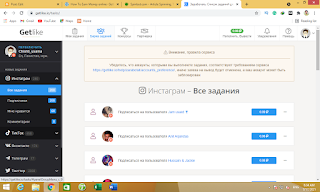A blockchain is a developing rundown of records, called blocks, that are connected utilizing Cryptography. Each square contains a cryptography hash of the past block, a timestamp, and exchange information (for the most part addressed as a Merkle Tree). By plan, a blockchain is impervious to the adjustment of its information. This is because once recorded, the information in some random square can't be adjusted retroactively without the modification of every single ensuing square.
History:
Cryptographer David Chaum first proposed a blockchain-like protocol in his 1982 dissertation "Computer Systems Established, Maintained, and Trusted by Mutually Suspicious Groups.
The first blockchain was conceptualized by a person (or group of people) known as Satoshi Nakamoto in 2008. Nakamoto significantly improved the design using a Hash-like -method to timestamp blocks without requiring them to be signed by a trusted party and introducing a difficulty parameter to stabilize the rate with which blocks are added to the chain.
Block Time:
The block time is the normal time it takes for the organization to produce one additional square in the blockchain. Some blockchains make another square as regularly as like clockwork. When of square fruition, the included information gets unquestionable. This is essentially when the exchange happens in digital currency, so a more limited square time implies quicker exchanges. The square an ideal opportunity for Ethereum is set to somewhere in the range of 14 and 15 seconds, while for bitcoin it is on normal 10 minutes.
USES:
Blockchain innovation can be incorporated into various zones. The essential utilization of blockchains today is as a circulated record for digital forms of money, most outstandingly bitcoin. There are a couple of operational items developing from the evidence of ideas by late 2016. Organizations have been up to this point hesitant to put blockchain at the center of the business structure. Even though organizations have been hesitant to completely execute blockchain, many have started testing the innovation and are leading low-level execution to measure its impacts on authoritative proficiency.
Advantages of Blockchain Technology:
Upgraded security :
Your information is delicate and urgent, and blockchain can essentially change how your basic data is seen. By making a record that can't be adjusted and is scrambled from start to finish, blockchain forestalls misrepresentation and unapproved movement. Security issues can likewise be tended to on blockchain by anonymizing individual information and client authorizations to forestall access. Data is put away across an organization of PCs as opposed to a solitary worker, making it hard for programmers to see the information.
More prominent straightforwardness :
Without blockchain, every association needs to keep a different data set. Since blockchain utilizes an appropriated record, exchanges and information are recorded indistinguishably in various areas. All organization members with permissioned access see similar data simultaneously, giving full straightforwardness. All exchanges are permanence recorded and are time-and date-stepped. This empowers individuals to see the whole history of exchange and for all intents and purposes dispenses with any chance for misrepresentation.
Moment detectability :
Blockchain makes a review trail that reports the provenance of a resource at each progression on its excursion. In enterprises where buyers are worried about natural or basic liberties issues encompassing an item — or an industry upset by falsifying and extortion — this gives the evidence. With blockchain, it is feasible to share information about provenance straightforwardly with clients. Recognizability information can likewise uncover shortcomings in any inventory network — where products may sit on a shipping bay anticipating travel.
Sped up :
Customary paper-weighty cycles are tedious, inclined to human mistake, and frequently requires outside intervention. By smoothing out these cycles with blockchain, exchanges can be finished quicker and all the more effectively. Documentation can be put away on the blockchain alongside exchange subtleties, dispensing with the Increased productivity and speed
Customary paper-substantial cycles are tedious, inclined to human blunder, and regularly require outsider intervention. By smoothing out these cycles with blockchain, exchanges can be finished quicker and all the more proficiently. Documentation can be put away on the blockchain alongside exchange subtleties, killing the need to trade paper. There's no compelling reason to accommodate various records, so clearing and settlement can be much faster. need to trade paper. There's no compelling reason to accommodate various records, so clearing and settlement can be a lot quicker.
Mechanization :
Exchanges can even be computerized with "savvy contracts," which increment your productivity and speed the cycle much further. When pre-indicated conditions are met, the following stage in exchange or cycle is naturally set off. Keen agreements decrease human mediation just as dependence on outsiders to check that terms of an agreement have been met. In protection, for instance, when a client has given all important documentation to record a case, the case can naturally be settled and paid.







amazing work very helpful
ReplyDelete